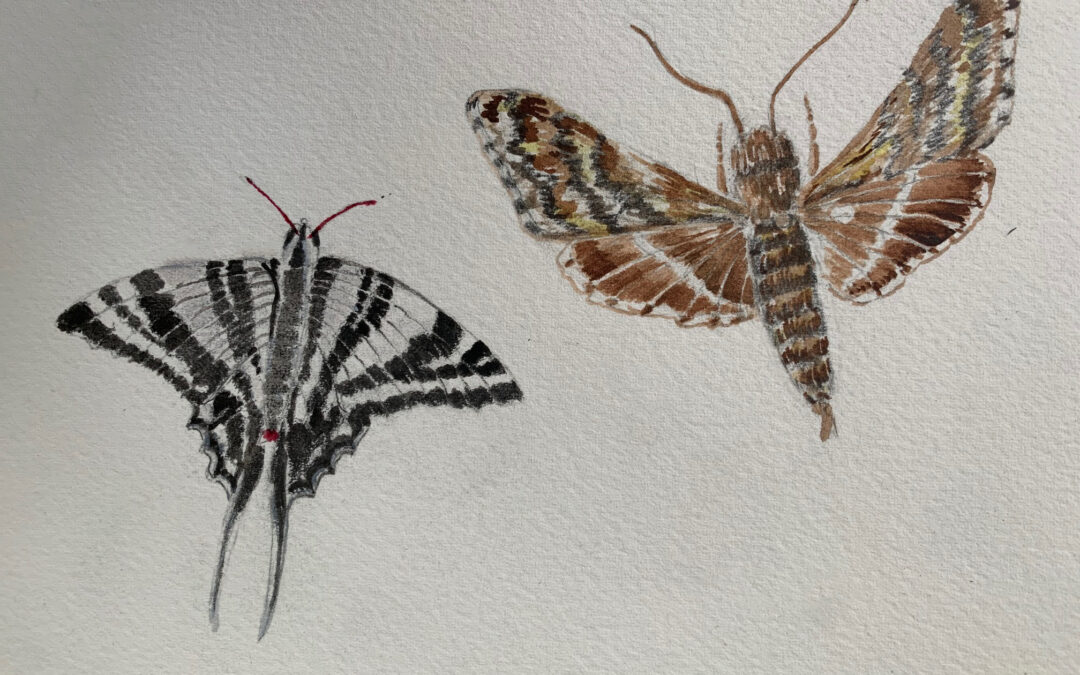We’re back to Paw paws and spicebushes. Since both trees are considered ”understory trees,” I think it is important to think about how important these plants are to our ecology. They are often overlooked. No one would select a 25 foot tree as the major shade tree in their yard. Paw paw trees have a very peculiar taste to insects and therefore only a few butterflies and moths have evolved to raise their young on the leaves of this small tree. These lepidoptera are among our most unusual and beautiful butterflies and moths.
One of the most recognizable is the Zebra swallowtail (the Latin name has recently changed to Protographeum marcellus). It is referred to as a kite swallowtail, because of the way the forewings fold, kite-like, when it is at rest. It has the distinctive “tails” that our more familiar tiger swallowtails, also have. These tails may add protection to the butterfly because they attract the attention of a predator. If the tails are bitten off by a bird or bat, the butterfly can still fly and is able to lay its eggs.
Another important lepidoptera whose caterpillars eat paw paw tree leaves is the Paw Paw Sphinx Moth (Dolba Haloeus). This brown patterned hawkmoth flies in the late afternoon and evenings, so most of us are not out and about in the forest to see it. If we could hold the male and female next to each other, we would see that the female is about twice as large as the male (the picture I painted here is the female moth). Their caterpillars spin a cocoon and complete metamorphosis under fallen leaves on the ground.
There is a new book out last year called Gardening for Moths by Jim McCormac and Chelsea Gottfried (Ohio University Press, Athens, Ohio, 2023).* It adds important information to our understanding of lepidopterans which so far is almost all about butterflies. Butterflies tend to be more colorful and are available during the day. But those thousands of brown moths that we ignore also feed a lot of birds. Moths may be much more important than butterflies as pollinators. We just don’t see them. And our data about nighttime pollinators is incomplete.
McCormac and Gottfried suggest taking a flashlight out to your garden during the night to see whether you can spot the nocturnal pollinators on your flowers.
Next week I’ll try to complete what I started about the spicebush tree and its pollinators. Though I am back in northern Wisconsin, I don’t want to let go of the important information about the understory tree pollinators.
*The book, Gardening for Moths focuses on the eastern temperate zone from Kentucky to southern Wisconsin and southern Michigan in the USA. I may try to get a paw paw tree growing in a sheltered area here in northern Wisconsin, but I know it is not a sure thing. This book does cover many other species that grow and thrive farther north.


